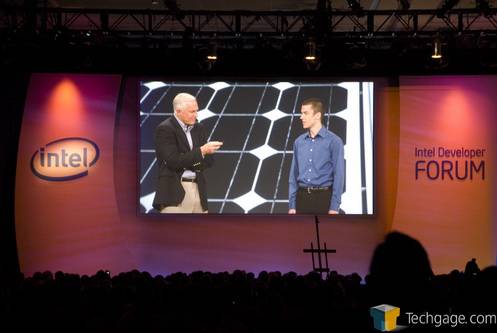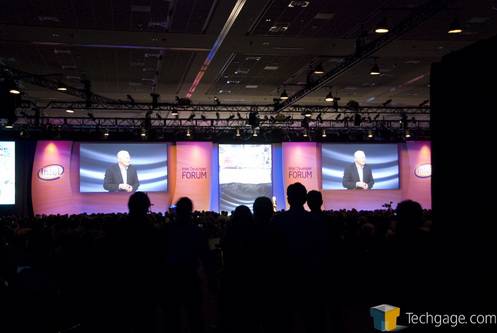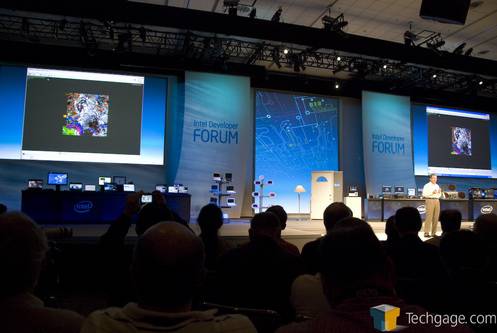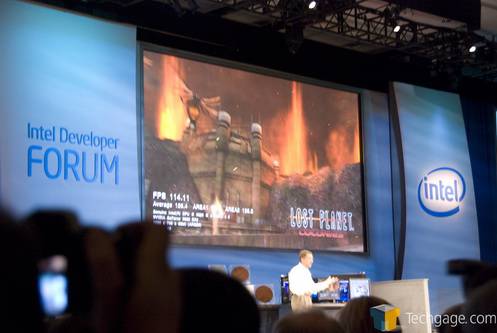- Qualcomm Launches Snapdragon 4 Gen 2 Mobile Platform
- AMD Launches Ryzen PRO 7000 Series Mobile & Desktop Platform
- Intel Launches Sleek Single-Slot Arc Pro A60 Workstation Graphics Card
- NVIDIA Announces Latest Ada Lovelace Additions: GeForce RTX 4060 Ti & RTX 4060
- Maxon Redshift With AMD Radeon GPU Rendering Support Now Available
IDF 08 SF: Day 1 Keynote Roundup
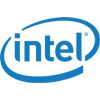
Greetings from the Fall 2008 Intel Developer Forum! Day 1 is done, and we’ve already heard speeches from some of the biggest names at the company, regarding new products and the company’s future direction, as well as the significance of technological progress worldwide. We’ve got your details about what was said, and who said it.
Page 1 – Craig Barrett; Pat Gelsinger
Yesterday may only have been Day 1 of Intel’s Fall 2008 IDF conference, but it was certainly the busiest for us at Techgage. Among the day’s furiously-paced activities, we’ve been audience to several keynote speeches – many of them condensed into an afternoon marathon that featured Pat Gelsinger and Dadi Perlmutter.
Craig Barrett, “Inspiring Innovation”
After an almost frighteningly quick cab ride through the eleven blocks between our hotel and San Francisco’s Moscone Center West on Tuesday morning, and a quick stop for caffeination, we arrived during the very earliest part of Intel Board Chairman Mike Barrett’s keynote.
Barrett’s speech focused on the various ways that technology has improved the quality of life worldwide, and focused on four major revolutionary technological developments in the areas of human-machine interface, venture capitalism, healthcare, and alternative energy
During the speech, Barrett was joined onstage by the people responsible for the technological developments he discussed, and he engaged them each in a short interview. Present was Johnny Lee, the famed developer of ‘head-tracking’ using a Nintendo Wii system, who demonstrated an electronic whiteboard system. Next came Matt Flannery, the CEO of Kiva, a web site that connects entrepreneurs that have smaller financial needs with small-time investors willing to address those needs. After that came a student from Oregon, who had won awards for his work with polymer-based solar panels.
All of this led up to Barrett’s announcement of the Intel “Inspire-Empower” award program, which will award four $100,000 prizes to entrepreneurs who are developing truly revolutionary ideas to advance technology, with the entries being judged by an independent panel, and the prizes themselves to be awarded at the Spring 2009 IDF.
Pat Gelsinger, “Digital Enterprise: IA = Embedded, Dynamic, Visual
That afternoon, we filed back into the auditorium to hear a speech by Intel’s senior vice president of the Digital Enteprise Group, Pat Gelsinger. Pat’s speech touched on three placed that Intel product architecture is headed – embedded, dynamic, and visual.
To the end of embedded internet-access products, Intel offers its commoditized low-power CPU, the Atom, which already appears in several consumer products, such as the Eee PC by ASUS. He identified several potential barriers to development of a successful embedded-media CPU, or any type of silicon for that matter – long product life, scalability, cost, power consumption, power management, He then proceeded to explain how Intel technologies provide solutions to those barriers, including WiMAX and IPv6 addressing.
Pat revealed Intel’s involvement with the IPv6 By 2012 movement, and then explained how Intel’s Atom addreses the needs of embedded internet access applications, along with Intel’s upcoming San Onofre system-on-a-chip processor that’s expected in the second half of 2009. To wrap up his discussion of the ‘Embedded’ internet access segment, Pat welcomed a BMW engineer onto the stage to demonstrate a media/navigation system built into a car, and powered by an Intel Atom CPU.
Next, Gelsinger discussed the dynamic scalability of the Penryn and Nehalem microarchitecture, which would next appear in the form of the “Dunnington” 6-core Xeon-class CPU. He also introduced benchmarking scores for the six-core Dunnington CPU, which included a SPECint_rate 2008 score of 277, and an IBM benchmark during which the Dunnington CPU broke the 1 million score barrier. After that, he explained a few more details of how the Nehalem product offerings would break down – on the server side, Nehalem-EP products would provide enhanced power management, wile Nehalem-EX products would deliver increased performance.
Gelsinger next invited Rajesh Kumar up onto the stage, to explain the advanced power management features of Nehalem that virtually eliminate power waste via leakage, and Nehalem’s innovative Power Control Unit, which would provide the CPU with monitoring to ensure that it’s operating as efficiently as possible. With Nehalem, which you’ll soon come to know as the “Core i7” architecture, Intel has managed to produce a CPU that uses a vanishingly-small amount of power with all transistors in the ‘off’ state, but the PCU also has the ability to deactivate certain cores of the multi-core CPU that are not being loaded by software.
After this, Gelsinger described how Nehalem will provide an enhanced platform in servers, on the desktop, and in mobile computing, with workloads such as high-performance computing, 3D content creation (typically rendering), and virtualization. Nehalem supports what Intel is calling ‘Virtualization 2.0’ – which now features workload management, as well as an improved I/O layer that prevents the CPU from being bogged down with overhead from network traffic.
On the desktop, Intel’s latest X58-based “Ibex Peak” motherboard uses a single-chip solution for the motherboard chipset, since the memory controller is CPU-integrated for the first time with Nehalem. He also demonstrated Nehalem machines in a gaming situation, as well as a machine with Cinebench installed – which delivered twice the performance of a similarly-equipped Skulltrail motherboard with Intel QX9775 CPUs.
Support our efforts! With ad revenue at an all-time low for written websites, we're relying more than ever on reader support to help us continue putting so much effort into this type of content. You can support us by becoming a Patron, or by using our Amazon shopping affiliate links listed through our articles. Thanks for your support!




